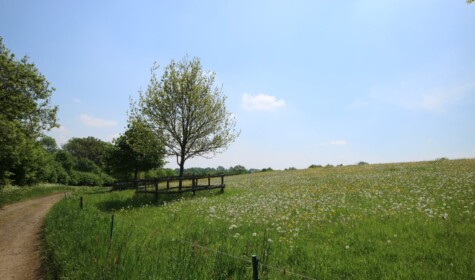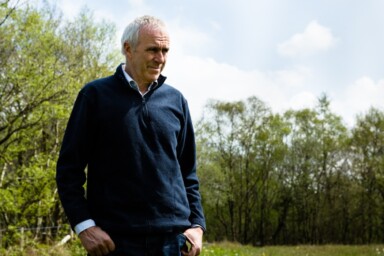Everybody is getting on the ‘regenerative’ band wagon – it has become the new buzzword in agriculture. But where does the term come from and what does it mean in relation to agriculture? Does it mean different things to different people? Where does it fit in the space between conventional agriculture and the range of agro-ecological, organic, biodynamic and ‘nature-friendly farming’ practices that it seems most aligned with? ‘Regenerative’ is also used widely among multi-national food companies and groups concerned with issues around food and farming and its impact on climate and biodiversity. The growing popularity of ‘regenerative’, however, is threatening to make the word’s meaning increasingly vague.
A little history
Interestingly, the term ‘regenerative agriculture’ and ‘regenerative farming’ comes out of the Rodale Institute in the US, though ‘regenerative’ has had an association with ‘farming’ and ‘agriculture’ prior to this. It was the Rodale Institute’s focus on ‘regenerative’ as a descriptive term particularly, of organic farming that was growing in interest in the US in the late 1970s and early 1980s. However, Rodale also saw the term ‘regenerative’ as an extension of organic farming practice, going beyond agriculture to encompass “changes in ‘macro structure’ and ‘social relevancy’”. He saw regenerative agriculture as biologically based, producing highly nutritious food in a holistic production system that totally eschewed any use of chemicals, seeking to increase soil health and fertility and utilising practices such as crop rotation, nutrient cycling, integrated pest management, weed cycling and others.
While the Rodale Institute brought ‘regenerative’ practices into farming at a time when farming was industrialising, it is important to remember that regenerative practices have a deep history, passed down through varying indigenous peoples across the globe. This is especially true in the US, where intercropping, a technique where compatible crops are grown together, was favoured by the Iroquois, who cultivated the ‘three sisters’ (squash, corn and beans) extensively across the Northeast of the US. Agroforestry was also important as a practice, particularly in the southern US States where indigenous African farming techniques had been transported during the slave trade.
It is George Washington Carver, the revered African American agriculturalist, that could arguably be called the ‘forefather of regenerative agriculture’. While Carver is best known for his work on the commercialisation of peanuts, he was committed to agro-ecological practices. Carver championed the black-eyed pea and other leguminous crops in rotations, promoted the use of green manures and suggested ‘mulching and manuring’ in the restoration of degraded land. He was also, notably, an early interrogator of chemical use in farming.
So, it is important not to assume that ‘regenerative’ is something shiny and new. In fact, the term fell out of use in relation to agriculture and farming for an extended period of time through the 1990s to around 2015. In the meantime, ‘sustainable’, ‘organic’ and ‘agroecological’ were used more broadly.
The return of ‘regenerative’
Between 2016 and 2020, some 52 papers had been published on ‘regenerative agriculture’ and ‘regenerative farming’ – the term had returned to the vocabulary of farming. While ‘regenerative’ is now widely used, its definition is still malleable and there has yet to be a certification established in the UK to outline what constitutes regenerative farming and agriculture.
In 2017, Regeneration International provided this definition:
“’Regenerative Agriculture’ describes farming and grazing practices that, among other benefits, reverse climate change by rebuilding soil organic matter and restoring degraded soil biodiversity – resulting in both carbon drawdown and improving the water cycle.”
What is notable in this definition is the focus, not just on farming but, in particular, on grazing, acknowledging the role that livestock play in sequestering carbon in the soil and the relationship of this to soil health. It further recognises the climate crisis and the need for holistic land management. It goes on to detail particular practices: min-till / no-till; the use of cover crops, crop rotations, compost and animal manures to support soil fertility; supporting biological ecosystem biodiversity; and grazing practices, “to stimulate improved plant growth, increased soil carbon deposits, and overall pasture and grazing land productivity while greatly increasing soil fertility, insect and plant biodiversity, and soil carbon sequestration”.
The definition notably refutes the value of artificial and synthetic fertilisers, arguing that they have “created imbalances in the structure and function of microbial communities in soils, bypassing the natural biological acquisition of nutrients for the plants”, and it goes on to detail the contribution to climate change that the use of such fertilisers impacts.
However, not everyone feels the same about the use of artificial and synthetic fertilisers and other chemicals in regenerative farming and there is an arguable schism in the thinking around whether they have a place in this new practice. Can chemically-based products be used in regenerative farming? The Noble Research Institute based in Oklahoma say ‘yes’, but with caveats: “the fertilizer must provide a production benefit that exceeds any temporary negative impact on soil biology…we want to apply only enough fertility, especially nitrogen, to kick-start plant growth but not impede developing soil biology”.
Many farmers see themselves on a journey moving increasingly closer to regenerative farming, but it is not easy to transition overnight. A recent piece in Farmers Weekly features farmer Michael Kavanagh who has been reducing inputs and making incremental changes on his farm over the past seven years as he draws on a range of regenerative practices. This is, of course, a good thing in the bigger picture, but is change happening fast enough?
The danger of greenwashing
As the meaning of ‘regenerative’ expands outwards into corporate circles, it is at risk of becoming a form of greenwashing. Just have a read of the fine print in Nestle’s ‘Net Zero Roadmap’. And similarly, if regenerative farming doesn’t sit within an agreed framework of practice, is it meaningful in name only? It’s time to start pinning down, clearly defining and, perhaps, certifying what constitutes regenerative farming. In a 2021 piece in Wicked Leeks, a farmer is quoted as saying “I don’t think there’s anything you have to do to be regenerative – I think it’s more of a mindset.” It may be an open-ended perspective, but if there isn’t anything that you have to do, can you really just do what you want?







